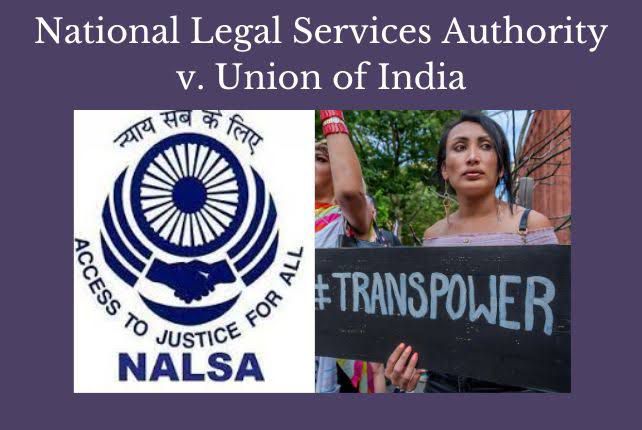CASE ANALYSIS OF RAMKRISHNA DALMIA v. JUSTICE TENDOLKAR

Author: Shruti Gupta, 3 BA LLB, Christ (Deemed to be University) Delhi -NCR
- INTRODUCTION
A notice issued by the Central Government was published in the Indian gazette on December 11, 1956. This gazette listed large and well-known companies and corporations owned by people like Sarvarshi Ramkrishna Dalmia, Jaidayal Dalmia, Shanti Prasad Jain, Sriyans Prasad Jain, Shital Prasad Jain, and others who were either their relatives, associates, or simply connected to these people. The investing public made significant financial contributions to the shares of these companies.. It was claimed that the reason investors in the firm were losing money was because these individuals were squandering the funds generated by public funding or public shares for their own personal gain. Upon this, the central government established an inquiry which was led by Shri Justice S. R. Tendolkar, Judge of the High Court of Bombay. The panel was asked to look into and provide a report on eleven distinct provisions.
The corporations that had defaulted were identified by name, and an inquiry was to be carried out. Publication of this notification was authorized by the central government under “Section 3” of the Commissions of Inquiry Act 1952.
- FACTS OF THE CASE
Following six separate appeals, a division bench of the Bombay High Court issued an overall decision and judgement in three distinct applications made under article 226 of the Constitution. In these situations, the petitioners requested a proper instruction or order under section 226 to revoke and set aside the notification that the Union of India, acting in accordance with Section 3 of the Commissions of Enquiry Act 1952, authorities gave it, published on December 11, 1956. By the aforementioned ruling and decision, the high court revoked the regulations, denied the petitions, and declared the notice to be lawful and valid—with the exception of the final section of clause 10—while also making modifications.
- ISSUES
1. Whether the act is ultra vires of the constitution as filed on behalf of the Petitioner side counsel?
2. Whether the act committed was against article 14 of the constitution?
3. Whether R.K. Dalmia and people in connection with it were out of the way of the act?
4. Whether Sarvarshi Ramkrishna Dalmia, Jaidayal Dalmia, Shanti Prasad Jain, Sriyans Prasad Jain, Shital Prasad Jain and others were in connection with these people misusing the money for their personal benefits?
5. The notification is bad as the action of the government in issuing it was mala fide and amounted to an abuse of power and also as it violates “Article 23” of the constitution.
- PETITIONER’S ARGUMENT
1. In two ways, the law itself is beyond the scope of the constitution; first, the notification given by the central government goes beyond the act. First, that Parliament lacked the authority to pass a legislation granting such a broad range of powers; and second, that the investigation was clearly an appropriation of the judiciary’s duties rather than serving any legislative or administrative function.
2. The relevant government has not used its discretion appropriately based on a valid categorization. The complaint against the notification is that the government has overreached itself since it failed to carry out the policy as intended or adhere to the Act’s guiding principles.
3. Singling out the petitioner and their firms, the relevant government has discriminated against them.
4. The notification was sent with an objective of abusing authority and in ill faith, which breaches article 23 of the constitution.
- RESPONDENT’S ARGUMENT
1. The Act’s section 3 grants the relevant government the authority, therefore the notice stays within its bounds.
2. Article 246 of the constitution grants Parliament the authority to pass laws, and thus means that the Act does not contradict the constitution. It cannot be considered the seizure of judicial responsibilities because neither the government nor Parliament have conducted an investigation into the matter.
3. It was further argued that the clause establishes the Parliament’s power to establish procedures for the creation of Commissions to conduct the inquiry into an issue of public significance.
4. The whole intent and process of forming a commission or other independent body for investigation is worthless if the panel is unable to recommend any actions. For the government to combat evil and carry out constructive goals, investigations are crucial.
5. There is nothing wrong with the notification from any point of view, and it is a bit early to challenge it under Article 23.
In the case of Budhan Choudhry v. State of Bihar, the true meaning and scope of Article 14 were established. Citing a number of other cases, including state of Bombay v. F.N. Balsara, Chiranjit Lal Choudhary v. Union of India, and many others, it was determined that “Although class legislation is prohibited by Article 14, appropriate categorization for legislative reasons is not prohibited.For a classification to be deemed legal, it must meet two requirements: first, it must be based on a comprehensible differentia that distinguishes those who are grouped together from those who are not; second, the differentia must make sense in relation to the objective that the relevant statute aims to achieve. We call this understanding-based differentiation “intelligible differentia.” The Act’s stated purpose and the grounds for classification must be connected.
- LAWS INVOLVED IN THE CASE
ARTICLE 14
Article 14 of the Indian Constitution outlines the people’ right to equality. Within the borders of India, no one may be denied equality before the law or equal protection under the law by the federal government or the state.” The petitioner in Ram Krishna Dalmia v. Justice Tendolkar argued that their right to equality, or article 14, had been infringed. The petitioner also claimed that it is evident from the notification that the petitioners and the firms have been regarded differently and as distinct classifications or groupings. The petitioners contested the notification’s legality.
According to the Basic Structure Doctrine, Article 14 in the case of “Indira Sawhney v. Union of India” is a basic right that cannot be curtailed in the event of a national emergency.
ARTICLE 246 AND SEVENTH SCHEDULE
Article 246 of the Constitution discusses the distribution of authority between the States and the Union in its seventh schedule. Article 246 defines these authorities by grouping them into three lists;
- Union List
- State List
- Concurrent List
The petitioner argued that the action was outside the bounds of law. There were two methods in which the act’s legitimacy was contested. The first was casting doubt on the parliament’s legislative authority. In order to do this, entries 94 of List I and 45 of List III that are referenced under the seventh schedule were read into. They declared that the parliament might enact laws pertaining to inquiries, but it could not enact laws granting any authority save the authority to call an investigation in accordance with these rules.
- JUDGEMENT
The burden of evidence is with the person asserting that a specific statute violates the constitution. Article 14 does not forbid reasonable categorization. If it does, discrimination is prohibited based on both procedural and substantive legal grounds. In order to maintain the presumption of legality, the court may consider factors such as historical background, common awareness, and respect.
In this ruling, the Supreme Court clarifies its reasoning on equality before the law. This was the case when the famous “classification test” had been used. In simple terms, it permits the State to categorise subjects differently (which is otherwise prohibited by Article 14) provided that the classification is rationally related to the intended goal and is based on comprehensible differentia (i.e., objects within the class are easily distinguished from those outside).
- CONCLUSION
In conclusion, the Supreme Court’s decision in this case implies that the guiding principle to consider when determining whether the behaviour is legal or in violation of text 14 is that the text does not forbid any reasonable classification. However, discrimination is prohibited by both procedural and substantive laws. In order to maintain the presumption of legality, the court may consider factors such as historical background, common awareness, and respect.
- ANALYSIS
This ruling implies that the law passed by the parliament needs to be thoroughly reviewed and analyzed. Additionally, the ruling clarifies article 14 and the grounds for the article’s exclusions. However, the responsibility for providing evidence is with the individual who claims or stands for the assertion that they have been denied any fundamental right. The fact that the law was drafted by respected individuals rather than simply anybody gives the initial impression that it is impartial and constitutional.
- REFERENCES




